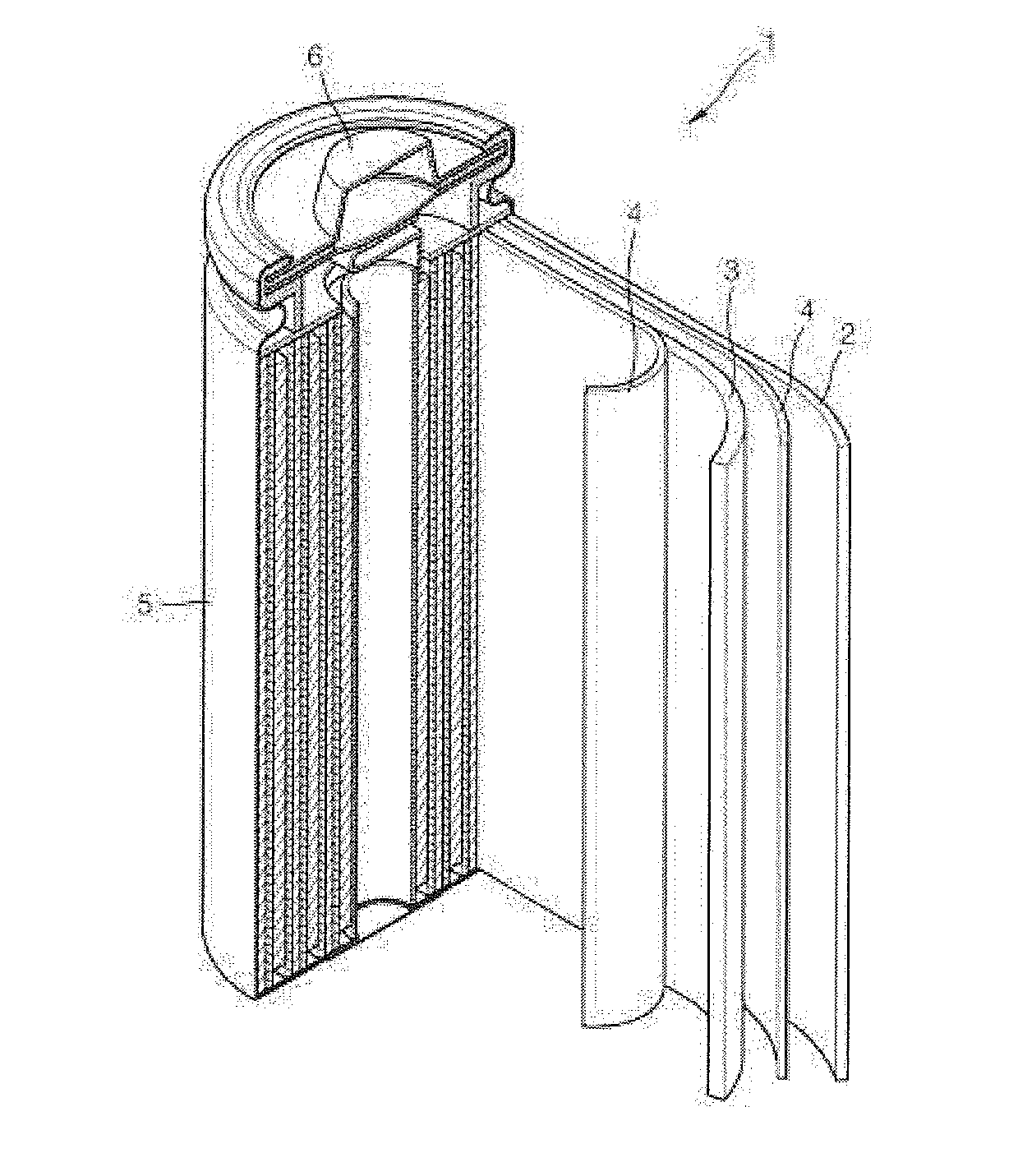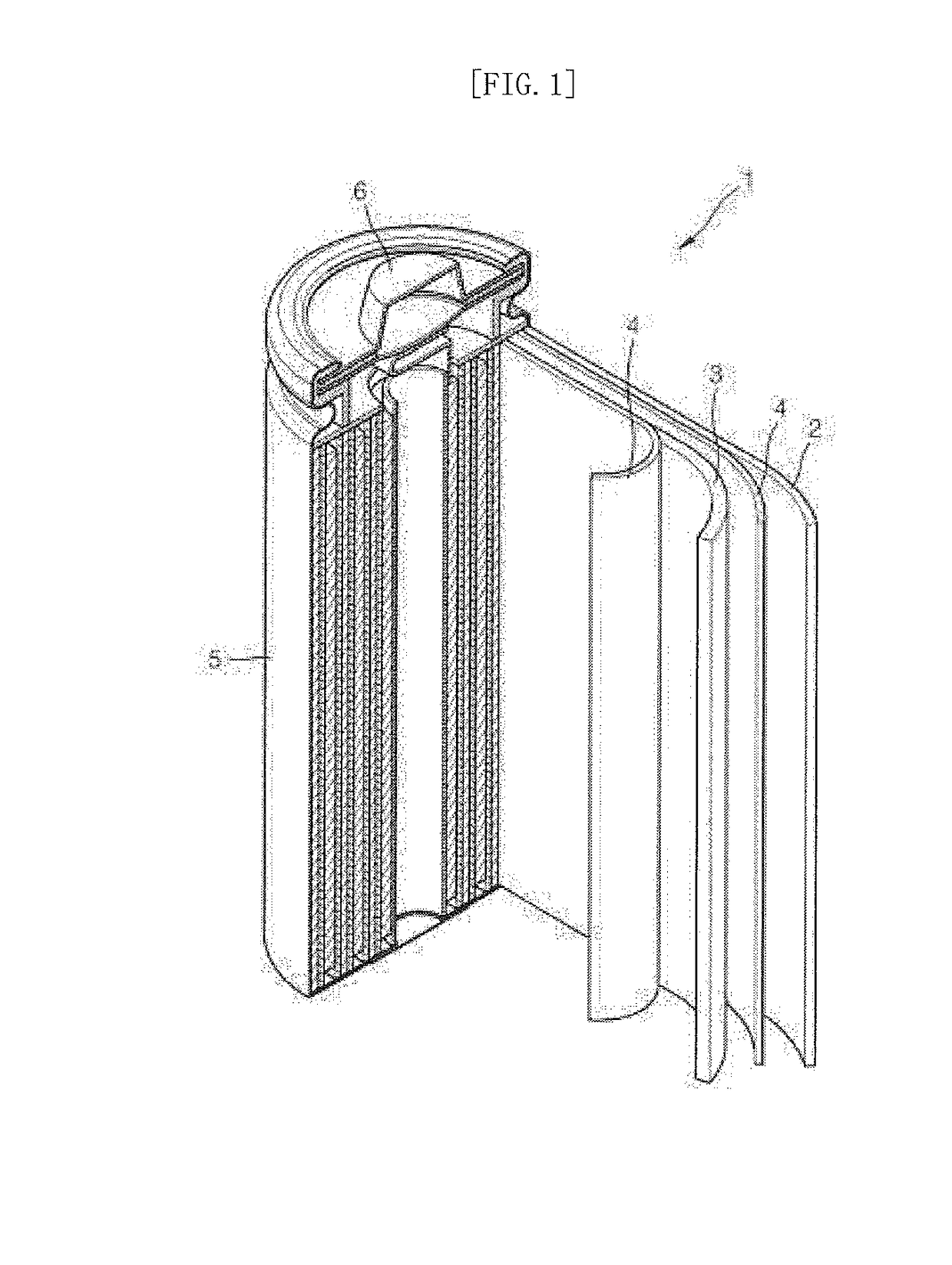Electrolytic copper foil, and collector, negative electrode, and lithium battery comprising same
- Summary
- Abstract
- Description
- Claims
- Application Information
AI Technical Summary
Benefits of technology
Problems solved by technology
Method used
Image
Examples
example 1
EVALUATIVE EXAMPLE 1
Measure Electron Backscattering Diffraction Pattern (EBSP), Specific Resistivity, and Concentration
[0097]EBSPs of the heat-treated electrolytic copper foils obtained in Examples 1 to 4, and Comparative Examples 1 to 3 were measured, crystallite grain mean diameters and full widths at half maximum of crystallite grain size distribution peaks in crystallite grain size distribution diagrams were calculated from the measured EBSP, and specific resistivity of matte sides was measured by a four-point probe method, and a result of the measurement is represented in Table 2 below. In the crystallite grain size distribution diagrams obtained from the electrolytic copper foils of Examples 1 to 4, a crystallite size (x-axis) and an area fraction (y-axis) occupied by the crystallite are illustrated, and a single modal grain size distribution representing one peak is represented.
TABLE 2FWHM of GrainGrain meangrain sizediameterdistribution peakSpecific resistivity(μm)(μM)[μΩ· c...
example 2
EVALUATIVE EXAMPLE 2
XRD Experiment
[0099]XRD spectrums of the matte sides of the heat-treated electrolytic copper foils obtained in Examples 1 to 4, and Comparative Examples 1 to 3 were measured.
[0100]I(220) / I(111) that is a ratio of strength (I(220)) of a diffraction peak for the (220) crystalline surface to strength (I(111)) of a diffraction peak for the (111) crystalline surface in the spectrum is calculated and represented in Table 3 below.
[0101]Further, orientation indexes M for (111), (200), (220), (311), and (222) crystalline surfaces in the XRD spectrums for the matte sides of the heat-treated electrolytic copper foils of Examples 1 to 4, and Comparative Examples 1 to 3 were measured. The orientation index was measured by using the orientation index M suggested by SElectrochim. Acta 39, 589(1994).
[0102]For example, in a sample having the (111) surface, the orientation index M is calculated by a method below.
IFR(111)=IF(111) / {IF(111)+IF(200)+IF(220)+IF(311)}
IR(111)=I(111) / {I(1...
example 3
EVALUATIVE EXAMPLE 3
Measure Tensile Strength and Elongation Percentage
[0105]A maximum load of the tensile strength measured by extracting tension specimens having a width of 12.7 mm×and a gauge length of 50 mm from the heat-treated electrolytic copper foils obtained in Examples 1 to 4 and Comparative Examples 1 to 3, and then performing a tension test at a crosshead speed of 50.8 mm / min under the standard IPC-TM-650 2.4.18B was referred to as room-temperature tensile strength, and an elongation percentage at the fracture was referred to as a room-temperature elongation percentage. A measurement temperature of the tensile strength after the high-temperature heat treatment and the elongation percentage after the high-temperature heat treatment is 25° C.
[0106]The tensile strength after the high-temperature heat treatment and the elongation percentage after the high-temperature heat treatment obtained by the measurement method are represented in Table 3 below.
TABLE 3ElongationTensile st...
PUM
| Property | Measurement | Unit |
|---|---|---|
| Temperature | aaaaa | aaaaa |
| Time | aaaaa | aaaaa |
| Thickness | aaaaa | aaaaa |
Abstract
Description
Claims
Application Information
 Login to View More
Login to View More - R&D
- Intellectual Property
- Life Sciences
- Materials
- Tech Scout
- Unparalleled Data Quality
- Higher Quality Content
- 60% Fewer Hallucinations
Browse by: Latest US Patents, China's latest patents, Technical Efficacy Thesaurus, Application Domain, Technology Topic, Popular Technical Reports.
© 2025 PatSnap. All rights reserved.Legal|Privacy policy|Modern Slavery Act Transparency Statement|Sitemap|About US| Contact US: help@patsnap.com


